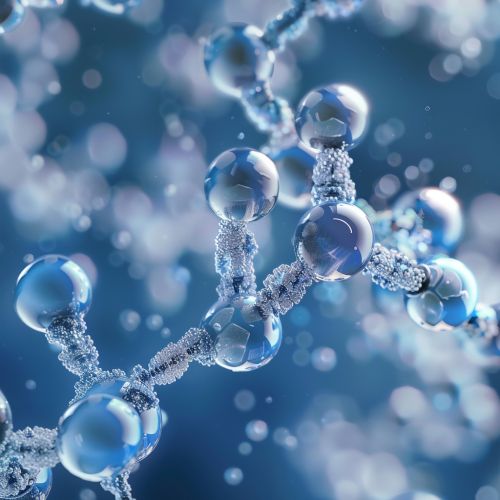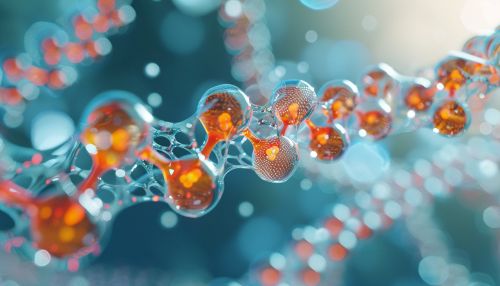NADH
Introduction
NADH or Nicotinamide adenine dinucleotide (NAD) + hydrogen (H) is a coenzyme found in all living cells. It is a dinucleotide, which means it consists of two nucleotides joined through their phosphate groups. One nucleotide contains an adenine base and the other contains nicotinamide.


Structure and Function
NADH plays a crucial role in a variety of cellular processes, most notably in metabolic reactions where it acts as an electron carrier. It is involved in redox reactions, carrying electrons from one reaction to another. This is notable in cellular respiration, specifically in the glycolytic, citric acid, and oxidative phosphorylation pathways.
Role in Metabolism
In metabolism, NADH serves a critical function in the transfer of energy from glucose and fatty acids to ATP, the primary cellular energy currency. During glycolysis and the citric acid cycle, glucose and fatty acids are broken down, and their energy is transferred to NAD+, producing NADH. In oxidative phosphorylation, NADH transfers its electrons to the electron transport chain, driving ATP synthesis.
Role in Redox Reactions
NADH is a key player in redox reactions, which are chemical reactions in which the oxidation state of atoms are altered. NADH serves as a reducing agent that can donate electrons. These reactions are critical for the maintenance of cellular homeostasis and the prevention of oxidative stress.
Role in Aging and Disease
There is growing evidence that NADH levels can influence the aging process and the onset of chronic diseases. A decline in NADH levels is associated with aging and a variety of diseases, including cancer, neurodegenerative diseases, and metabolic disorders. This has led to interest in therapeutic strategies to boost NADH levels.
Therapeutic Potential
Given its central role in metabolism and cell health, NADH has been explored as a potential therapeutic target. Supplementing with NADH has been proposed as a way to boost cellular energy levels, improve mitochondrial function, and slow the aging process. However, more research is needed to fully understand the potential benefits and risks of NADH supplementation.
